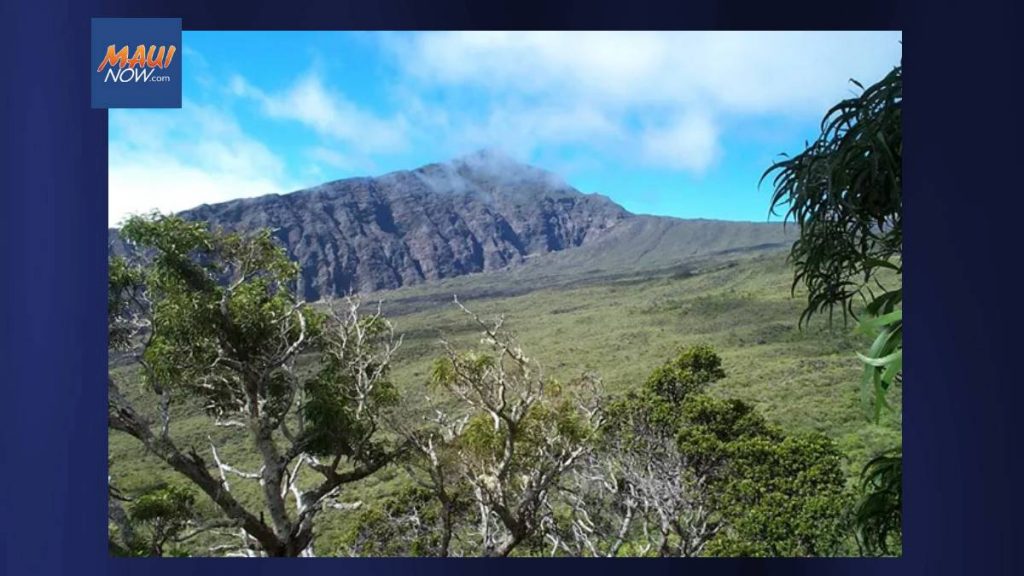
The Consolidated Appropriations Act of 2020, a $1.5 trillion spending bill signed by President Joe Biden Tuesday, includes millions of funding to protect Hawaii’s environment.
The bill makes critical investments in environmental protection for lands and oceans, including efforts to protect endangered species.
The bill makes substantial further federal investments to help Hawaii conserve our ina for future generations and protect endangered species, said Rep. Ed Case (HI-01), who serves on the Appropriations Committee and of the House Committee on Natural Resources.
Especially key for Hawaii is $6 million to the National Park Service to expand Haleakal National Park on Maui to create more recreational opportunities and enhance access to the Kaup Gap Trail,” Rep. Case added.
This portion of Kaup Ranch spans from the volcanic crater rim down 10,000 feet to the ocean. The acquisition will expand Haleakal National Park to protect important natural resources, including priority watersheds and endangered species facing a warming climate, and will ensure public access to recreational activities and the Kaup Gap Trail.
In a press statement, Rep. Case stated in that he had also helped secure additional funding for ocean protection. This includes corals as well as wildlife. The reefs provide a buffer to the effects of climate change, protect shorelines and anchor Hawaii’s economy from transportation to tourism.
We cannot truly protect our planet without protecting our oceans, Rep. Case said.
Hawai’i environmental highlights of the spending bill include:
Mlama I Ka ina – Caring for the Land
- $17 million for the National Trails System, which will benefit the Ala Kahakai National Historic Trail.
- $108 million for the Endangered Species Recovery Account to protect and restore endangered species, including $4 million for the US Fish and Wildlife Services State of the Birds program that focuses on endangered birds in Hawaii.
- $300,000 for the City and County of Honolulu to develop its city-wide Tree Inventory and Management Plan.
- $3.3 billion for the National Park Service, $142 million above the FY 2022 enacted level, to help support Hawaiis two national parks and various historic sites and parks.
- $52 million for the US Geological Surveys National and Regional Climate Adaptation Science Centers, including the Pacific Islands Climate Adaptation Science Center based out of the University of Hawaii.
- $75 million for Readiness and Environmental Protection Initiative (REPI). The Department of Defense created the REPI Program in response to land development and loss of habitat in the vicinity of or affecting military installations, ranges and airspace that can lead to restrictions or costly and inadequate training and testing alternatives. Through REPI, the defense department works with state and local governments, conservation organizations and willing private landowners to address these challenges to the military mission and the viability of defense installations and ranges.
Mlama i Ke Kai (Caring for the Oceans).
- $61 million for the Sanctuaries and Marine Protected Areas account, which supports Papahnaumokukea Marine National Monument.
- $148 million for the protection, research and management of marine mammals, sea turtles and other species.
- $34 million for the National Oceans and Coastal Security Fund, also known as the National Coastal Resilience Fund.
- $33 million for the Coral Reef Conservation Program, which supports coral reef ecosystems management and research critical to national coral reef restoration efforts.
- $4 million for the John H. Prescott Marine Mammal Rescue Assistance Grants.
- $415,000 for the Waikk Marine Life Conservation District Site Restoration project.
- $200,000 for the Moku o Loe (Coconut Island) Marine Laboratory Refuge Eco-Friendly Sea Wall Research project.
Overall, the bill includes $5.9 billion for the National Oceanic and Atmospheric Administration (NOAA), a large increase of $447 million above FY 2021. This funding includes $1 billion for NOAAs National Marine Fisheries Service, which is active throughout the Pacific out of NOAAs regional headquarters at Ford Island, Honolulu, and $200 million to accelerate information and decisions on adaptation to our changing climate.
It also includes $6 Million to maintain and repair NOAAs Atmospheric Baseline Observatories, such as the Mauna Loa Observatory from which the famous Keeling Curve proving rapid global climate change was discovered.
A detailed summary of the FY 2022 omnibus is available Here.


